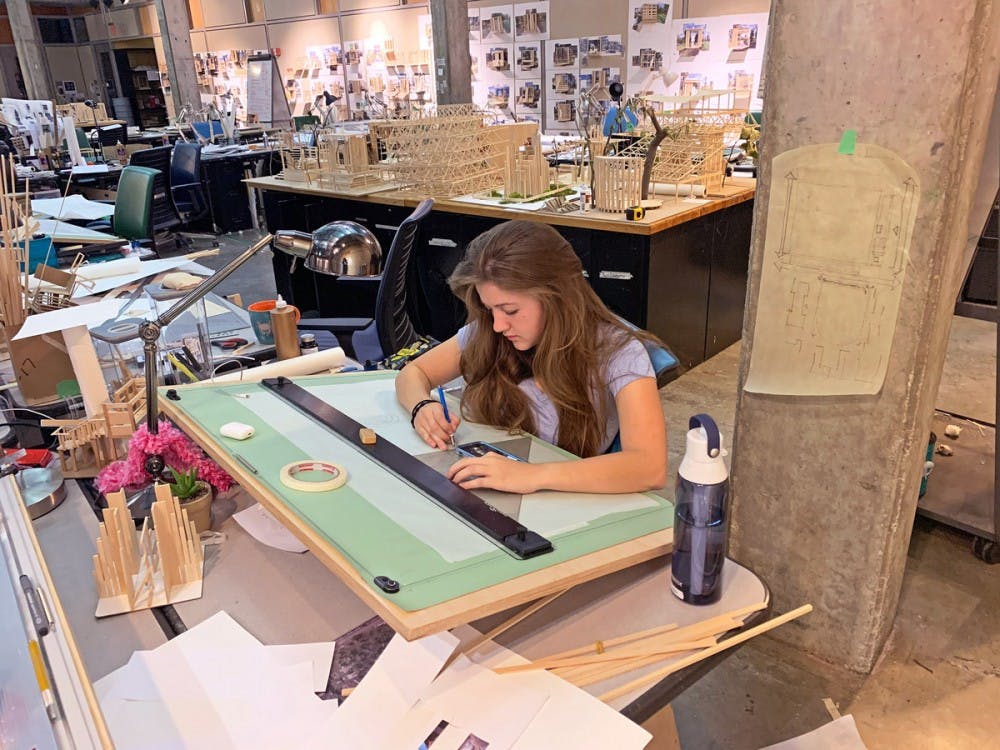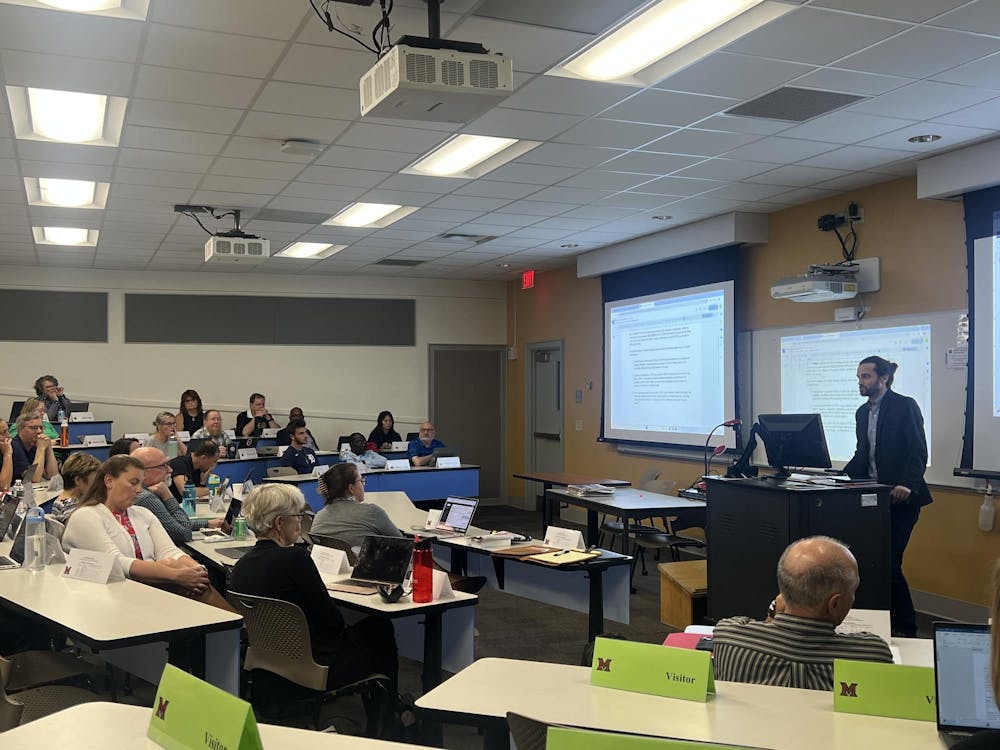For many students within Miami University’s Architecture and Interior Design (ARC+ID) Department, simply getting the materials to complete projects can result in thousands of dollars of out-of-pocket expenses.
The original architecture toolkit (which includes art supplies, drafting materials and model-making adhesives) is required for every ARC+ID student and costs $525 at the campus bookstore. Throughout the year, students are expected to maintain these supplies and replace them as needed.
Additionally, students are required to provide a file cabinet (costing around $50), a desk lamp ($39) and materials for a drawing board ($191). ARC+ID students must also buy the wood and cardboard necessary to make the models for their assignments.
“I, to some extent, was [prepared for the cost] because my older brother, who is four years my senior, went to school here for the same thing,” said senior Molly Burns. “So, I kind of had a heads-up that that would happen. But did I realize I would be in the woodshop all the time? Fifty cents here, a dollar here — not necessarily. I didn’t realize the frequency of it.”
Those 25 cent charges add up. Before long, ARC+ID students have spent hundreds of dollars to complete their projects.
“From what students have reported to me at the end of the first year, I get anywhere from $500 to $1000 in additional supplies above and beyond their original toolkit,” said Christie Lear, Miami’s first-year advisor in the ARC+ID program.
Although Lear said the department tries to be transparent about the additional cost, which can range from $1305 to over $1800, most students don’t find out about them until summer orientation. Because most of the materials are paid for out-of-pocket, many scholarships and financial aid won’t cover the added expense.
"The high material costs are unbelievable coming into architecture,” said first year Chris Magno. “There is little mention of buying materials to the incoming first years, but as soon as projects hit, you soon realize that your bank account is going to take a hit."
“I’ve had to have my parents add money to my MUlaa account multiple times only to pay for some wood that, as soon as the model is built, will be thrown into the recycling bin,” he added.
Lear said she has had students run out of money for supplies to complete projects. Although she has a stockpile of materials that she will give to students who are in need, it can be difficult for her to identify these students without them first approaching her.
Associate Dean of the College of Creative Arts (CCA) John Weigand said that making ARC+ID students pay for materials is not unique to Miami.
“Art supply affordability has been a long-standing challenge in schools of Architecture, Art and Design, where lots of supplies are needed in a studio environment. This is inherent to these disciplines across the country, rather than anything specific to Miami,” Weigand said.
Enjoy what you're reading?
Signup for our newsletter
However, Lear said the university could do more to make students aware of the program’s added cost.
“I think we could make an effort to try to communicate [the high costs of materials]. I’m not sure what we are doing right now, but I suppose we could have a sort of estimated cost breakdown on the website,” Lear said.
Sophomore architecture major Grace Stiles said she thinks more could be done to increase student awareness of the cost.
“I do remember when they told us it was going to be $1,000 or more extra after buying the supplies, so I had that number in my head. But maybe a way of budgeting … not telling us exactly what to spend, but giving us an idea [of the cost] before heading into a project [could be helpful],” Stiles said.
Although many ARC+ID students are surprised by the additional cost presented by their major, they also see a positive side.
“It is a little stressful when it comes to projects because you want to save money but also do well on your projects,” Stiles said. “But [having to buy your own materials] helps you actually figure out what you need and plan it out so you’re not overspending on every project.”
But the cost is still much higher than most students would like to spend.
“A scholarship would be nice,” Stiles added when asked about the high cost of materials.
A scholarship does exist to help students struggling with this cost (the Miami Family Fund). But neither Lear, Stiles, Weigand, Burns, nor Assistant Dean of CCA Gretchen Radler, knew about the fund’s existence.
Weigand, Lear and Radler all expressed interest in lowering the financial barrier in these programs.
“If the department is not being upfront, I do not think it’s intentional,” Burns said. “It just so happens that it’s not the forefront of their minds.”




